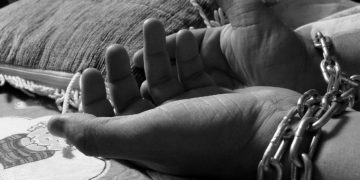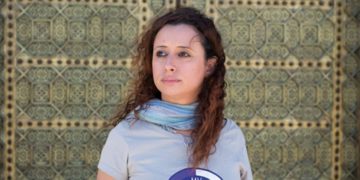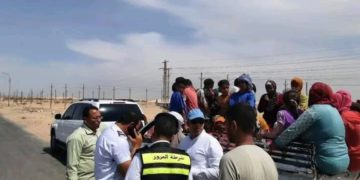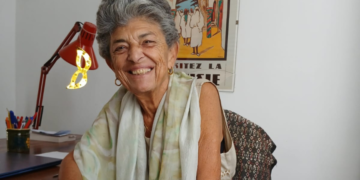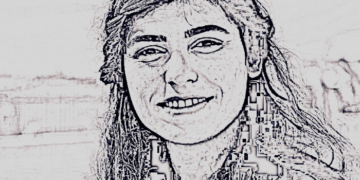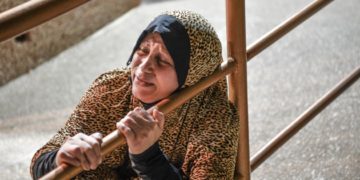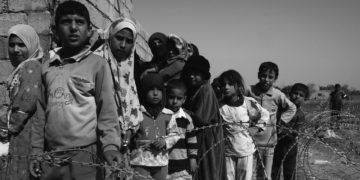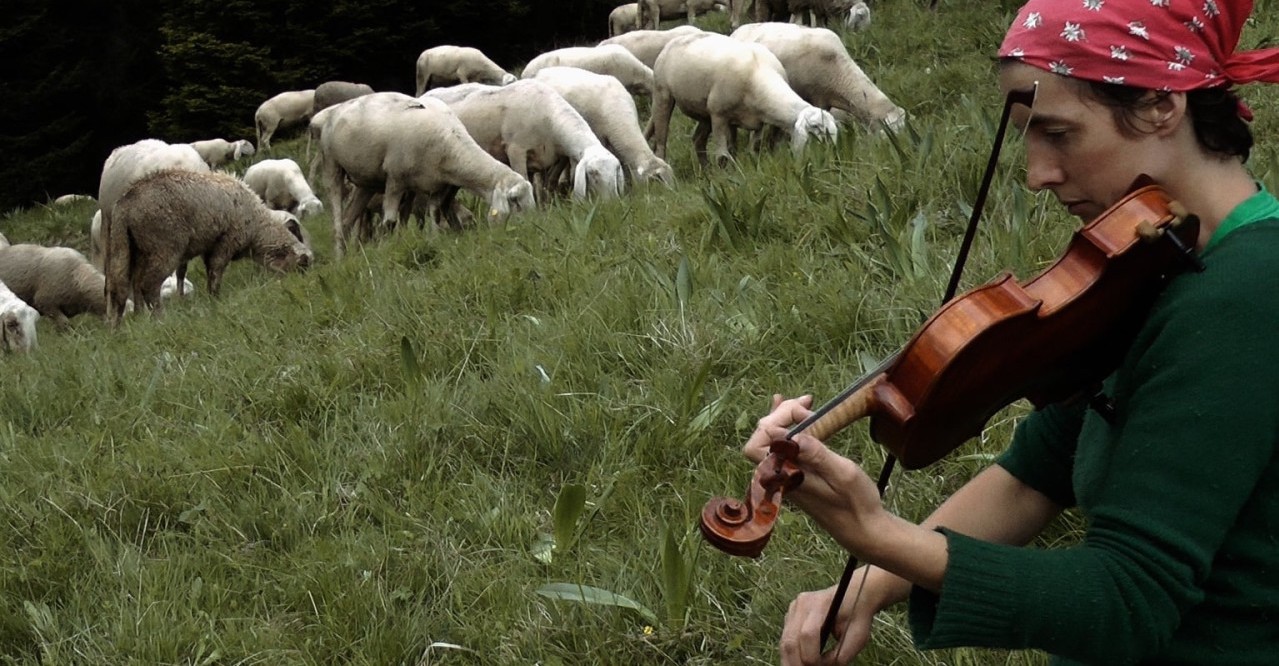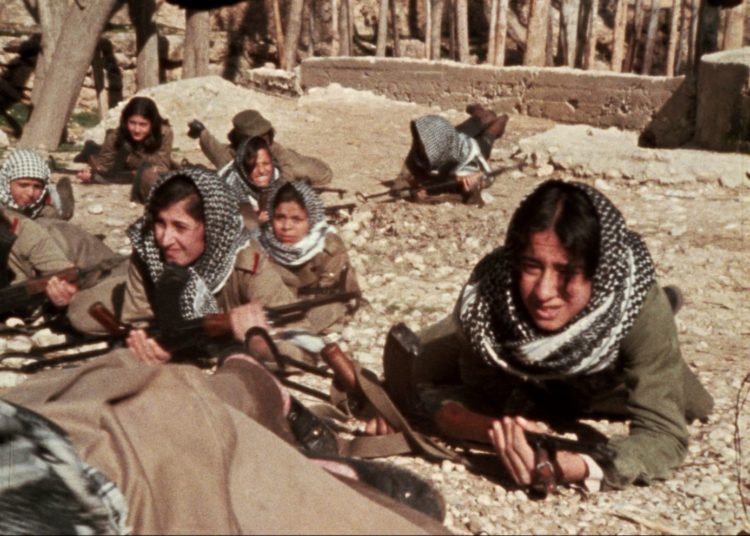This post is also available in: Français (French) العربية (Arabic)
From the Alps to the Aspromonte, passing by the islands, an increasing number of women climb up to the Shepherd’s High Lands in search of economic independence, personal fulfilment and social redemption. These women usually have strong characters. They are capable, resourceful and determined in carrying out a “care revolution” that proposes an alternative social, cultural and economic model to the indiscriminate exploitation of the planet and the massive production promoted by capitalism.
Landscape architect and documentary maker Anna Kauber tells their stories in the documentary film “In questo mondo”/In this World (2019), the result of two years of filming, 17,000 kilometres of travel and 100 video interviews for a total of about 1,000 hours of footage. “The women of the Tuscan-Emilian Apennines and the Alps have always practiced herding, but the official story is patriarchal and so far, nobody had ever talked about them,” the filmmaker explains.
The 18 protagonists of this intimate and choral narration are aged between 20 and 102 years and they come from various social and cultural backgrounds but they all share the desire to live in an authentic and essential manner, in close contact with nature.
At all latitudes and altitudes, these women have all faced opposition from their families for their choice. Some were engineers, lawyers, mathematicians who, tired of the city, have decided to recover abandoned land at high latitudes and endangered breeds, creating more virtuous and ethical food chains. Others are daughters of shepherds and pursue their parent’s activity by making improvements and innovations.
“In the loving care of animals, in the quiet regularity of daily activities, they feel free, a concept we usually associate with disengagement. Although they are struggling like crazy among a thousand difficulties, their eyes overflow with happiness and wonder.”
Some have holdings in semi-wild or indoor rearing, others go out at dawn and return after sunset. Maria Pia is Piedmontese wandering shepherdess who follows the animals on the Po plains in winter, in the summer pastures, up to two thousand metres high, and in the intermediate seasons in Val di Sesia, where the grass is tenderer. Caterina plays the violin leading the sheep to pasture between the alpine valleys and Friuli. In Sardinia, despite her age, Efisia does not wish to leave her profession, which fills her heart with joy. In Umbria, Anne and Aste are moved by the mystery of life every time a lamb is born. With them, there are also Michela, Donatella, Rosetta, Gabriella, Anna, Maria, Marica, Lucia, Elia, Alessandra, Addolorata, Rosa, Brigida and Rosina and thousands of goats and sheep, each carrying its own name. They often stare at the camera almost posing as if to take part in this collective tale.
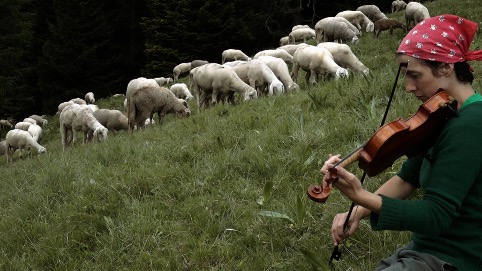
“A relationship of empathy and profound exchange has been established with all of them,” says the director. “We were absolutely on an equal footing on both sides of the camera.” I adopted a choral approach composed of different narrative pieces precisely because this is a film belonging to them all, not just those who appear in the final cut, edited by the talented Esmeralda Calabria. I believe this project falls within the ecofeminist cinema for its tribute to sisterhood and also because for me, activism has always been a strong source of inspiration together with the pursuit of beauty and love for art and nature.”
Directly recorded sound focuses on rarefied, spontaneous and often non-verbal human dialogue. The ringing of bells alternates with the sounds of the animals, their slow ruminating, the trampling of hooves, the rustling sound of leaves, the sound of rain and wind, among uncontaminated mountain landscapes of extraordinary evocative power.
Awarded as best Italian documentary at the 36th Turin Film Festival and at the ExtraDocFestival 2019, “In questo mondo” was screened in many cinemas. “Some of the protagonists met on the occasion of film screening, sometimes crossing regional borders for the first time.”
Some of these women were engineers, lawyers and mathematicians who, tired of the city, have decided to recover abandoned lands and endangered breeds
These shepherdesses are also faced with critical issues that hinder their mission, such as those with a bureaucratic and economic nature, as more often than not they are not able to obtain the right compensation from the sale of their products.
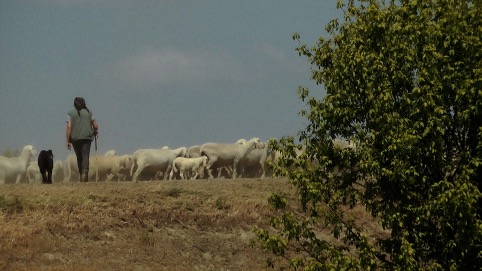
“Accustomed to the aesthetically flawless food in supermarkets, people no longer know to appreciate food that displays signs of imperfection precisely because of its craftsmanship,” explains Kauber. Then there are also the dangers related to the presence of wolves, now endemic in the Alps and the Apennines. “They were introduced thanks to European policies inspired by American wilderness without considering the fact that Italy is a small and rough country with ancient agroforestry and pastoral traditions that must be preserved. We need to overcome this superficial environmentalism typical of urban centric culture and understand that fences are not enough to protect animals from wildlife, especially if we are speaking of about 1,200 cattle on Alpine slopes, and shepherd dogs come at a cost and must be fed. I’m sorry if they kill a wolf but I suffer more when specimens of endangered sheep and goats die.”
Lastly, there are the threats that come from those who try to grab their land to obtain EU funds for grazing. This is the case of Assunta, the shepherdess who lives in transhumance between Lazio and Campania. In recent years, she has suffered intimidation and aggression with water pipes cut, fences damaged and animals injured and killed. “These are awful acts that very explicitly refer to the mafia language. Let’s not leave her alone!”, urges Kauber.





